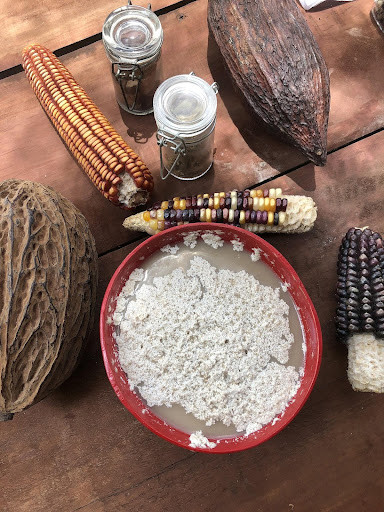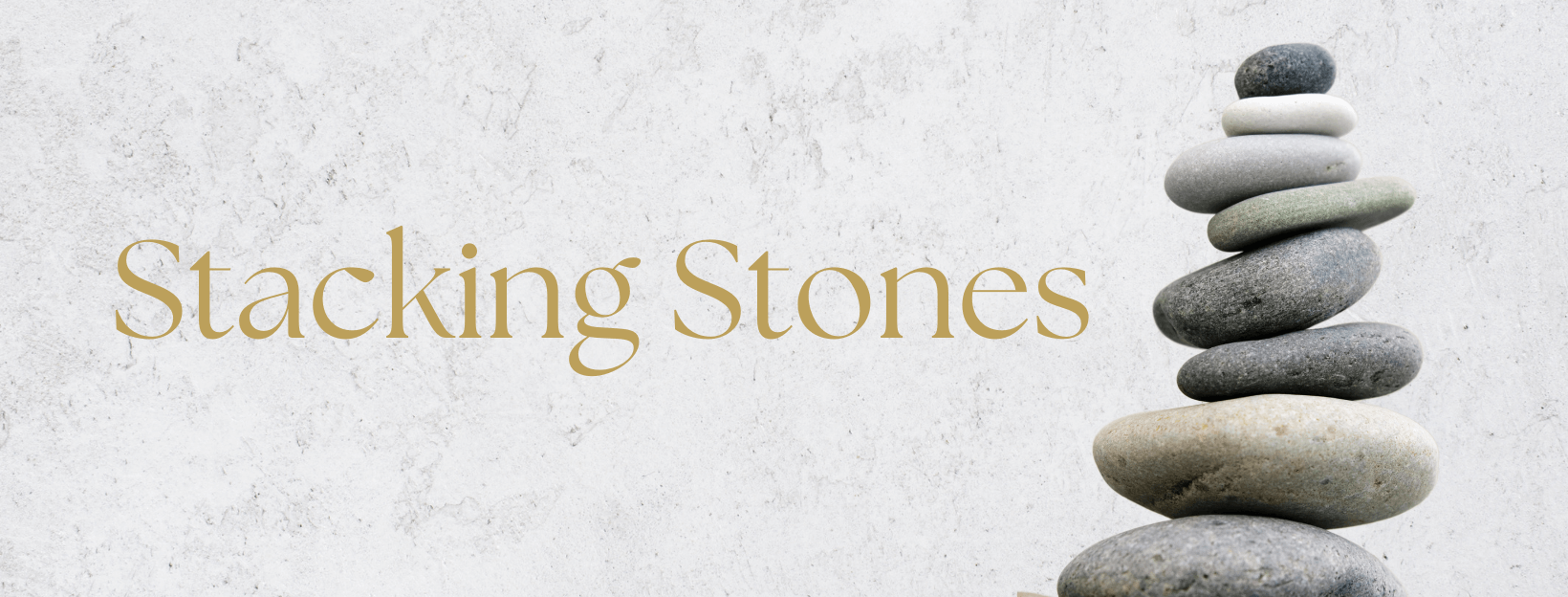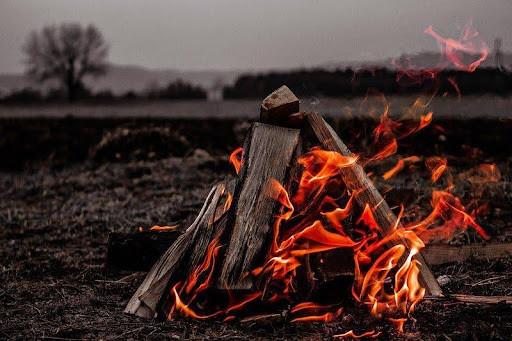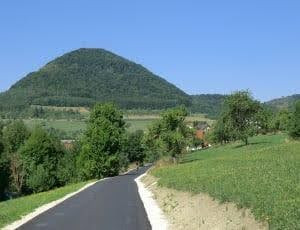
When the Maya and Aztec prepared cacao, it wasn’t dessert. It was devotion.
The ritual began long before the first sip — before the beans were roasted, before the grinding stones began their steady rhythm. The preparation itself was prayer.
In temple courtyards and sacred groves, cacao was offered to the gods — to IxCacao, goddess of fertility and abundance, and to Quetzalcoatl, the feathered serpent who brought the cacao tree down from paradise as a gift for humankind. The drink they made was bitter and alive, a sacred elixir used in weddings, coronations, funerals, and journeys between the worlds.
To drink cacao in ceremony was to open the heart and awaken the spirit. It was said that cacao allowed one to see with “clear eyes and a soft heart.”
The Ancient Experience
Cacao was often prepared communally. Women ground the roasted beans on smooth metate stones, mixing the paste with water, chili, and sometimes wild vanilla or maize flour. The rhythmic grinding sound was both practical and sacred — the pulse of the ritual beginning.
The liquid was poured from vessel to vessel to create a froth, which the ancients believed carried spirit, breath, and life-force. Participants would sit in a circle, the cacao distributed in cups carved from gourds or clay. Before anyone drank, they offered thanks — to the plant, to the ancestors, to the divine life animating all things.
What followed was not just drinking, but listening.
The effects were subtle yet profound: warmth spreading through the body, a softening behind the sternum, tears or laughter arising easily, a sense of being deeply connected — to oneself, to others, to the living world.
The Aztec ruler Moctezuma was said to drink cacao before visiting his wives, for its energizing and heart-stirring effects. The Maya drank it before battle or negotiation, to bring courage and clarity. And in smaller household ceremonies, cacao was shared to heal grievances and restore harmony — the original “peace offering.”
Across time, participants described the same sensations: lightness, clarity, connection, gratitude. The boundary between inner and outer softened. The world itself seemed to breathe.
How Did They Know?
Modern researchers often marvel at how ancient peoples developed such intricate practices — how they found not just edible plants, but spiritually active ones; how they knew how to prepare them in ways that unlocked their deeper effects.
Did they stumble upon cacao’s magic through trial and error? Or were they simply more attuned — to their environment, their bodies, and the subtler energies that modern life often drowns out?
There’s growing thought among anthropologists and consciousness researchers that ancient people didn’t “discover” such things by accident. Their world was relational — alive, responsive. Plants were not inert ingredients but beings with voices. Observation, intuition, and ritual offered a way of listening.
By living in continuous reciprocity with nature — planting, harvesting, observing the sky, honoring cycles — ancient societies developed a kind of embodied science, guided as much by perception and ceremony as by experimentation.
Cacao’s effects were likely felt before they were understood: its warmth in the chest, its subtle lift in mood, its way of deepening connection and truth-telling. Over generations, people learned to pair those effects with intention — crafting rituals that amplified the plant’s gifts.
In that sense, what they called sacred practice was also early neuroscience — ritualized co-regulation, community bonding, and heart-brain coherence through rhythm, breath, and biochemical allies. They may not have used those words, but they knew the feeling of balance and belonging — and designed their lives to sustain it.
Perhaps the better question isn’t how they knew, but whether we can learn to listen again.
The Science Behind the Sacred
Modern research is now mapping what these cultures intuited thousands of years ago: cacao is both physiological medicine and emotional catalyst.
Raw, minimally processed cacao is rich in flavanols — potent antioxidants that enhance blood flow to the heart and brain, improving mood and cognitive function. A 2022 study in Frontiers in Nutrition confirmed that regular consumption of cacao flavanols increases oxygenation in key brain regions tied to attention and memory.
But the heart-opening sensation devotees speak of? That, too, has a chemical story. Cacao triggers the release of anandamide — named after the Sanskrit word ananda, meaning bliss — and phenylethylamine (PEA), a compound our brains also release when we fall in love. These neurochemicals foster calm euphoria, empathy, and emotional openness.
Magnesium, abundant in cacao, supports relaxation and muscle ease, while theobromine (a gentle cousin of caffeine) creates alert serenity — energy without agitation.
Together, they form a neurochemical symphony that opens the emotional channels the ancients called the “heart.”
Even the act of preparation — the slow grinding, the pouring, the mindful stirring — is a ritualized regulation practice. It slows breathing, activates the parasympathetic nervous system, and anchors awareness in the body. Modern neuroscience might call it embodied mindfulness; the Maya called it sacred time.
The Modern Ceremonial Revival
Today, cacao ceremonies are being reawakened across the world — from yoga studios in London to mountain lodges in Peru. Participants describe experiences strikingly similar to those recorded in ancient texts:
“I felt my chest open.”
“I cried and didn’t know why — but it felt like release.”
“I finally felt at peace.”
“I cried and didn’t know why — but it felt like release.”
“I finally felt at peace.”
The ritual may vary — sometimes accompanied by drumming, chanting, or meditation — but the essence remains: connection, gratitude, and heart-centered awareness.
Researchers observing modern cacao circles note that the combination of bioactive compounds, rhythmic sound, and social attunement induces measurable calm in participants’ nervous systems. It’s not placebo — it’s physiology woven with ritual.
And while ceremony leaders today may not call upon the gods of Mesoamerica, they do invoke the same archetypes — abundance, unity, love, and the great heartbeat of the earth.
A Simple At-Home Cacao Ritual
You can experience this ancient heart medicine wherever you are. All you need is presence — and good cacao.
1. Prepare your space.
Choose a quiet corner. Light a candle. Open a window if you can, to invite the world in.
Choose a quiet corner. Light a candle. Open a window if you can, to invite the world in.
2. Prepare your cacao.
Whisk 1–2 tablespoons of ceremonial-grade cacao paste (or pure, unsweetened powder) into 6 ounces of hot water or plant milk. Add a pinch of cinnamon or chili for warmth. Sweeten lightly if you wish — but let the cacao’s natural bitterness remain; it’s part of the medicine.
Whisk 1–2 tablespoons of ceremonial-grade cacao paste (or pure, unsweetened powder) into 6 ounces of hot water or plant milk. Add a pinch of cinnamon or chili for warmth. Sweeten lightly if you wish — but let the cacao’s natural bitterness remain; it’s part of the medicine.
3. Set intention.
Hold the cup between your palms. Close your eyes. Whisper a few words to your heart — something you’re ready to feel, release, or receive.
Hold the cup between your palms. Close your eyes. Whisper a few words to your heart — something you’re ready to feel, release, or receive.
4. Drink with awareness.
Take slow sips. Notice the texture, the taste, the warmth spreading from your hands to your chest. Listen for your breath. Let your thoughts slow.
Take slow sips. Notice the texture, the taste, the warmth spreading from your hands to your chest. Listen for your breath. Let your thoughts slow.
5. Integrate.
After the last sip, sit quietly or journal for a few minutes. What sensations arise? What memories, what gratitude, what clarity?
After the last sip, sit quietly or journal for a few minutes. What sensations arise? What memories, what gratitude, what clarity?
This is how you make ordinary time sacred again.
Cacao was once the sacred “food of the gods” for the Maya and Aztec — used to open the heart, calm the mind, and connect to the divine. Ancient participants described feelings of clarity, compassion, and unity — sensations modern science now explains through cacao’s flavanols, magnesium, and mood-boosting compounds.
They likely learned its power not by accident, but through deep attunement to the living world — listening to plants, to the body, to spirit.
You can bring this practice home by preparing cacao slowly, with intention and gratitude, allowing it to become not just a drink, but a ritual of reconnection — to yourself, to the earth, to what is sacred in you.
___________________
Begin Within
and align with the rhythm of nature and self.












0 Comments